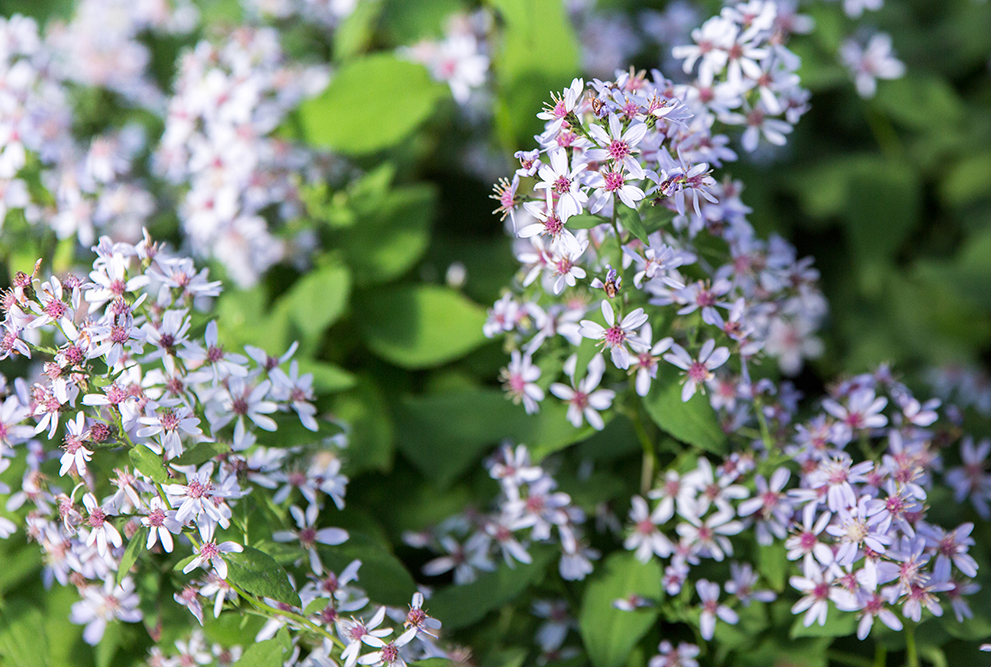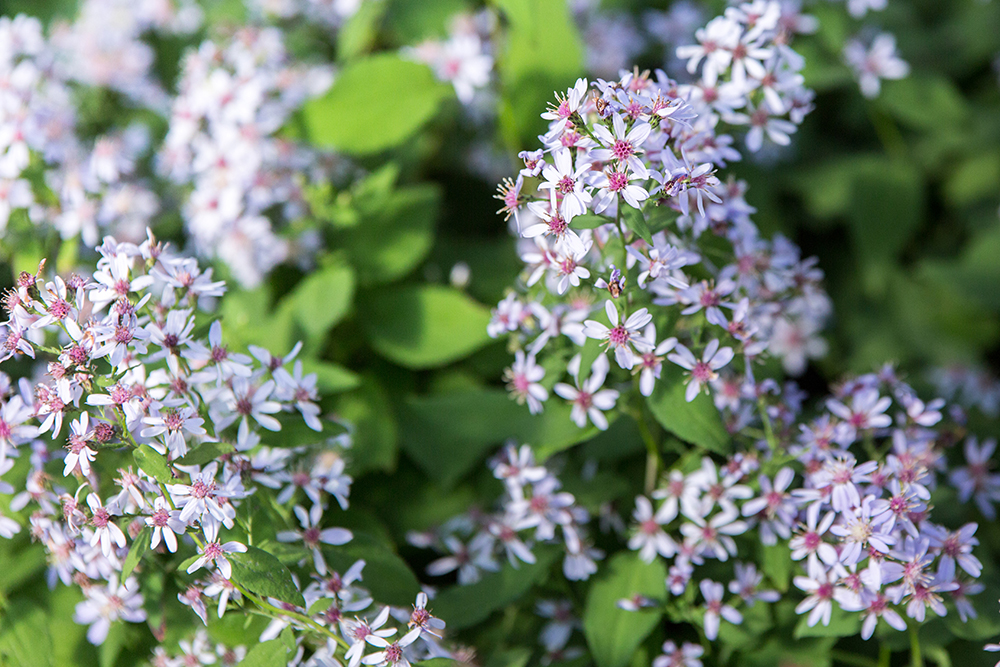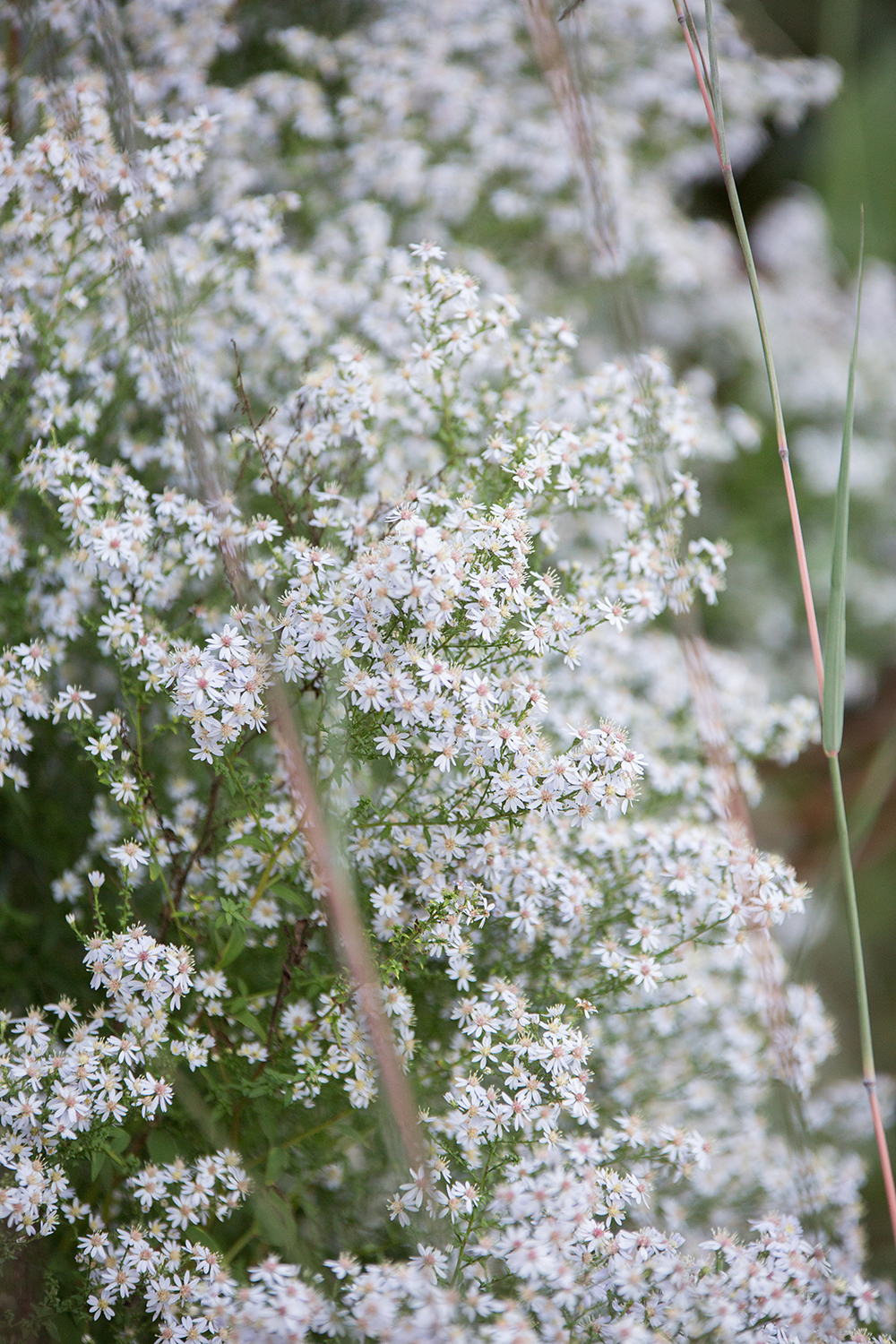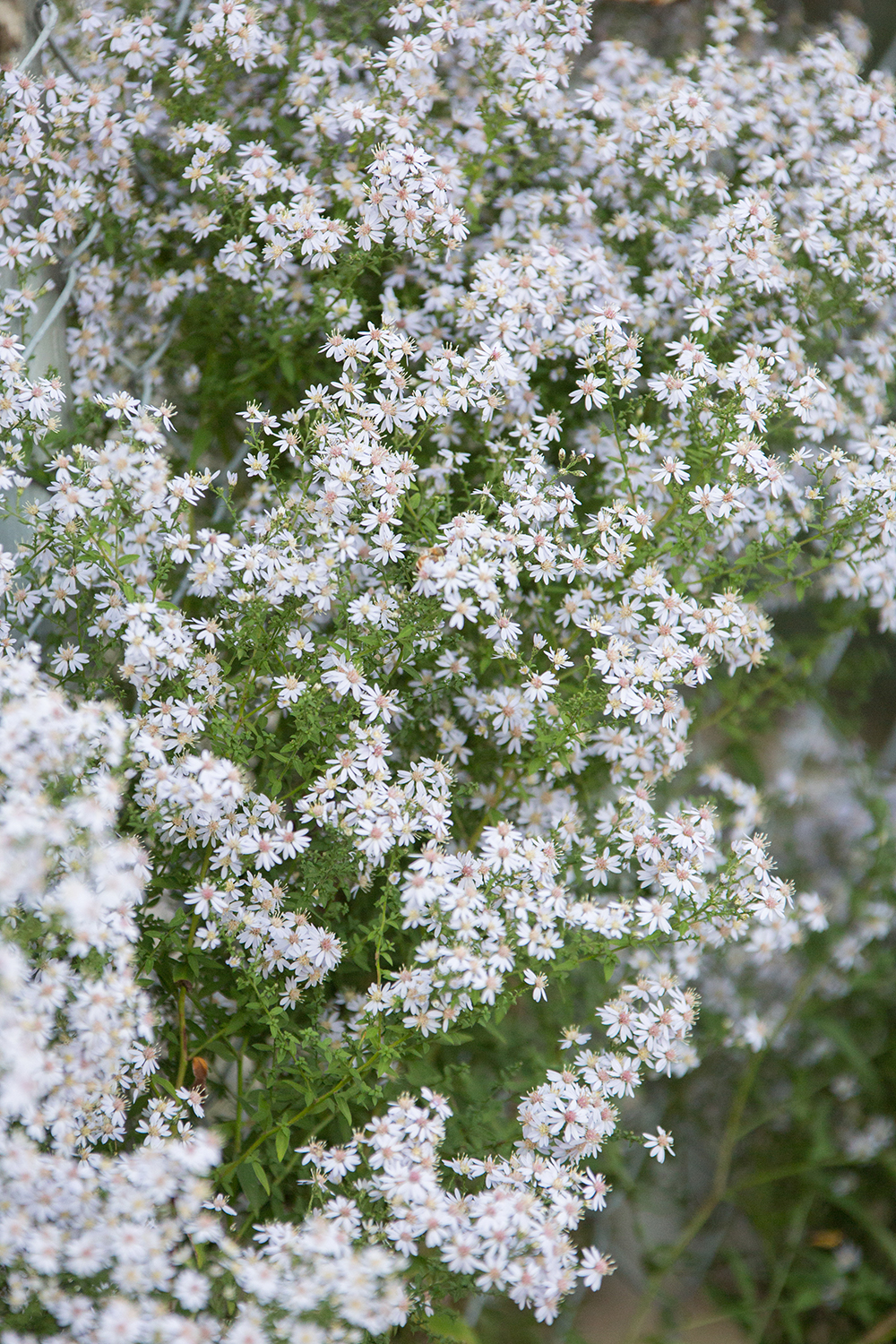Aster cordifolius 'Avondale'
(Syn: Symphyotrichum cordifolium)
Aster-Wood
Aster cordifolius 'Avondale'
(Syn: Symphyotrichum cordifolium)
Aster-Wood
Less fussy about soil moisture, this native aster is best planted at the edge of a woodland or en masse in naturalized settings. Airy, cascading stems are covered with small, pale blue flowers with yellow centers. A great late season food source for pollinators, but typically not favored by deer. Introduced by: Mt. Cuba Center
Plant Details
- Zone: 3 - 8
- Height: 24-36"
- Spread: 18-24"
- Exposure: Full Shade, Part Shade
- Soil Moisture: High Water Needs, Low Water Needs, Moderate Water Needs
- Drought tolerant: No
- Bloom time: Early Fall
- Foliage Color: Green Shades
- Flower Color: Blue Shades
- Fragrant: No
- Good Cut Flower: Yes
- Native: Nativar
- Deer resistant: Yes
- Rabbit resistant: No
- Bee-friendly: Yes
- Attracts butterflies: Yes
- Attracts hummingbirds: No
- Groundcover: No
- Roy Diblik Favorite: No
Plant Details
- Zone: 3 - 8
- Height: 24-36"
- Spread: 18-24"
- Exposure: Full Shade, Part Shade
- Soil Moisture: High Water Needs, Low Water Needs, Moderate Water Needs
- Drought tolerant: No
- Bloom time: Early Fall
- Foliage Color: Green Shades
- Flower Color: Blue Shades
- Fragrant: No
- Good Cut Flower: Yes
- Native: Nativar
- Bee-friendly: Yes
- Deer resistant: Yes
- Rabbit resistant: No
- Attracts butterflies: Yes
- Attracts hummingbirds: No
- Groundcover: No
- Roy Diblik Favorite: No
Grower Information
Plant your Aster crop in spring for late summer and fall sales opportunities along with Rudbeckia, Eupatorium, Vernonia and fall grasses. Asters are heavy feeders, but it is best to discontinue feeding once they begin to bloom. Pinching is beneficial to promote lateral branching.
- PowerPlug Size(s): 32s
- Optimal Planting Time: Spring
- Retail Sales Window: Fall, Summer
- Moisture in Production: Average
- Requires Shade in Production: No
- Vernalization Required for Bloom: No
- Vernalization Beneficial: Yes




